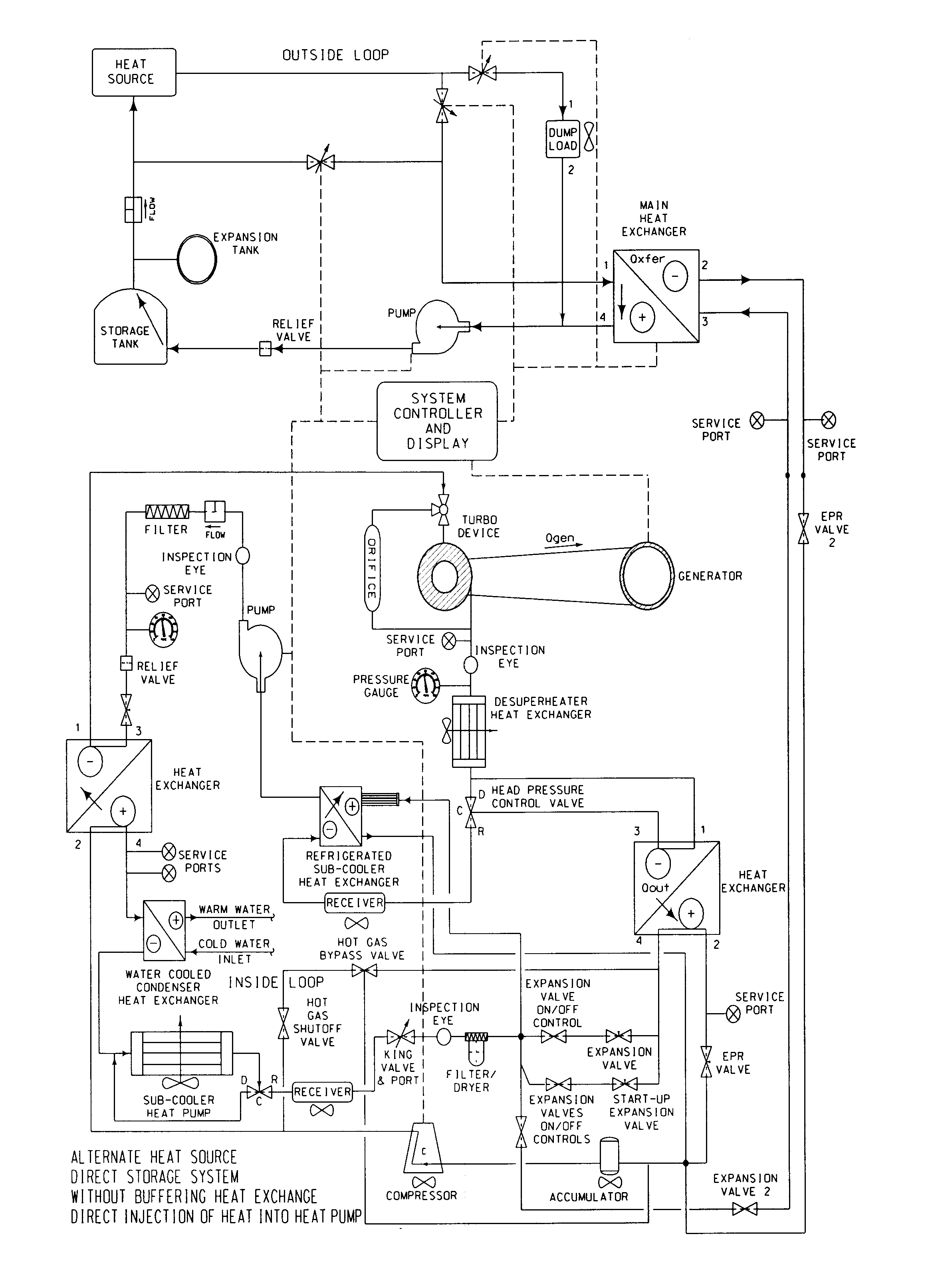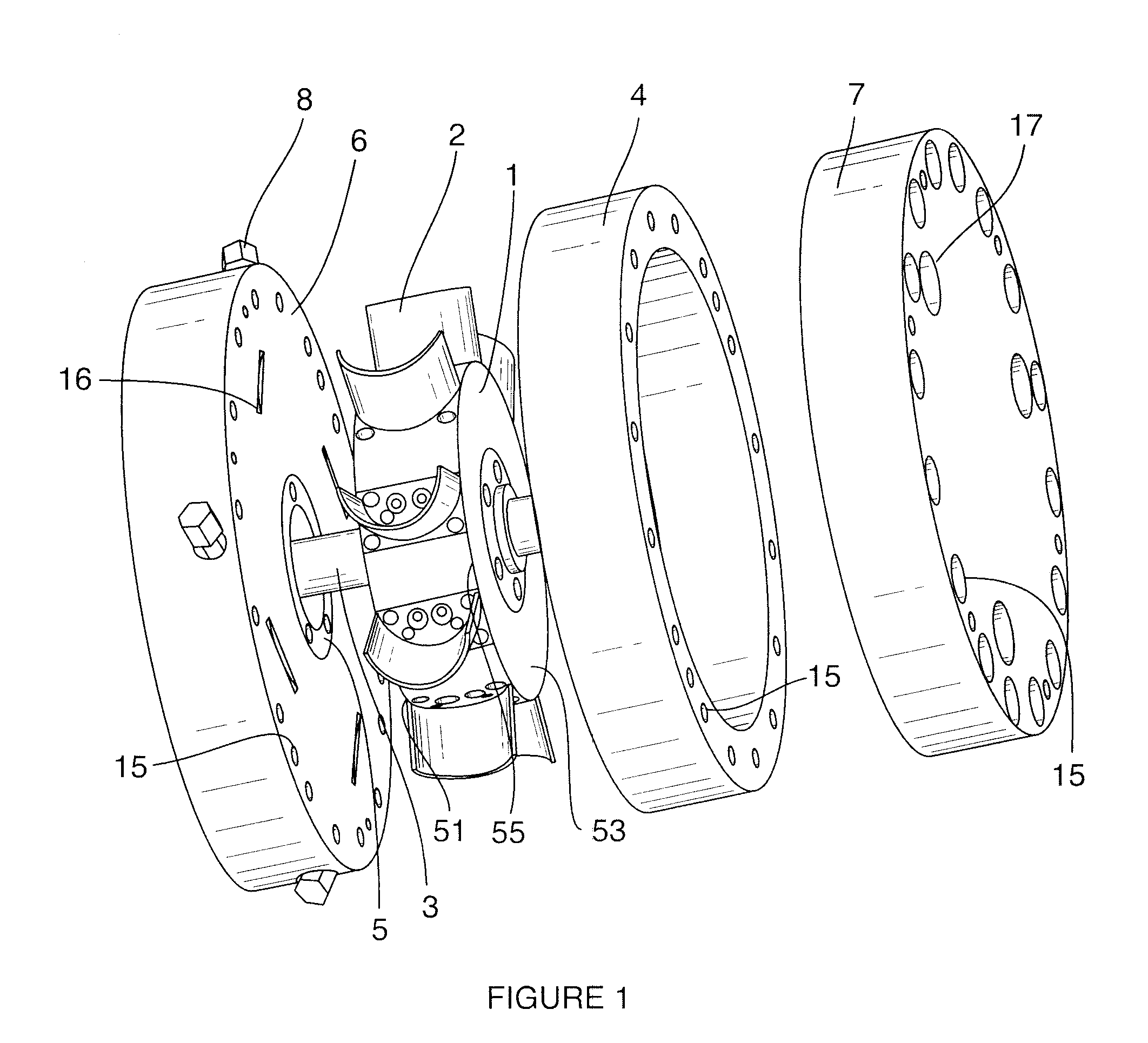Thermodynamic power generation system
a power generation system and thermodynamic technology, applied in the direction of wind motors with parallel air flow, wind motors with perpendicular air flow, steam use, etc., can solve the problems of blades not working well for low pressure and temperature gasses
- Summary
- Abstract
- Description
- Claims
- Application Information
AI Technical Summary
Benefits of technology
Problems solved by technology
Method used
Image
Examples
Embodiment Construction
[0079]FIGS. 1 through 11 describe the heat engine. FIGS. 12 through 15 describe the complete thermodynamic system.
[0080]Beginning with the heat engine, FIG. 1 shows an exploded view of the heat engine components. As shown, the heat engine includes a left end bell 6, a right end bell 7, and a ring 4 that act together to enclose, seal, and support the engine. A rotating member 1 is mounted on a shaft 3, and the shaft 3 is supported by bearings 5 that are mounted in both left end bell 6 and right end bell 7. The shaft 3 is operatively connected to an electrical generator or other mechanical device to extract work from the rotating member 1. The left end housing includes inlet ports 16 each supporting a nozzle 8. The right hand bell 7 includes exhaust ports 17. While the invention is illustrated with four inlet nozzles, the number of inlet ports and corresponding nozzles can vary from one to many. The left end bell 6, the ring 4 and right end bell 7 are securely fastened together in a f...
PUM
 Login to View More
Login to View More Abstract
Description
Claims
Application Information
 Login to View More
Login to View More - R&D
- Intellectual Property
- Life Sciences
- Materials
- Tech Scout
- Unparalleled Data Quality
- Higher Quality Content
- 60% Fewer Hallucinations
Browse by: Latest US Patents, China's latest patents, Technical Efficacy Thesaurus, Application Domain, Technology Topic, Popular Technical Reports.
© 2025 PatSnap. All rights reserved.Legal|Privacy policy|Modern Slavery Act Transparency Statement|Sitemap|About US| Contact US: help@patsnap.com



